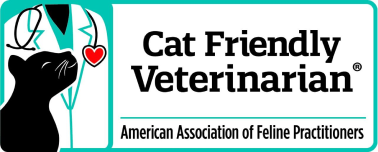Urgent Care
For Sick Pets
Pet emergencies can strike unexpectedly, leaving owners feeling overwhelmed. In such moments, staying calm, recognizing worrisome symptoms promptly, administering first aid, and swiftly transporting the animal to our veterinary clinic are paramount. The decisive actions of the owner significantly enhance the likelihood of a speedy recovery and the restoration of the pet's health.
Alerting Symptoms:
As pet owners, you're intimately familiar with your furry companions' habits and behaviors. Any deviations, such as difficulty breathing, bleeding, unresponsiveness, seizures, or severe injuries, should raise immediate concern. It's important to note that cats and dogs often conceal signs of discomfort, a survival instinct inherited from their wild ancestors. Hence, changes in behavior or appetite may indicate underlying issues. Trust your intuition and seek professional assistance without delay.
Ensuring Safety First:
Pets under distress may not differentiate between their owners and strangers, potentially exhibiting aggression. Therefore, before rendering aid and transporting the animal, take the following precautions:
- Record any concerning symptoms, such as limping or convulsions, to aid the veterinarian in diagnosis.
- Secure cats snugly or, if feasible, apply a cone-collar. Dogs should be muzzled or have a barrier placed over their heads.
- Refrain from approaching animals, particularly strangers, if their saliva is foamy. Contact veterinary specialists immediately in such instances.
Coordinated Response:
While initial first aid from a close bystander is crucial, it cannot replace professional veterinary care. Therefore, in dire situations involving cats or dogs, arranging their transport to a veterinary facility is imperative. Pet owners should bring along all relevant documents, including vaccination records. Additionally, be prepared to provide detailed information about concerning symptoms or potential causes of the animal's condition. Effective collaboration between the owner and the veterinarian ensures timely intervention and facilitates the pet's swift recovery.


“We're here to assist you. As a fellow pet owner, I deeply understand the emotions that come when some critical health issues happen with your beloved furry friends. Myself and our entire team are dedicated to making this experience as seamless as possible.
Your trust is the foundation of our practice, and we carry this responsibility with heartfelt gratitude.”
Your next steps
Book an appointment
Call us and describe your problem and situation. We’ll do everything possible to arrange an appointment for you as soon as possible or schedule it if the situation is not so urgent.
Visit us
We’ll examine your pet and provide all necessary urgent procedures. Depending on the complexity we’ll discuss, will your pet stay overnight or you’ll have the opportunity to go home the same day.
Recovery period
Depending on procedures, the recovery period can vary. But our specialist will consult you and specific terms and additional measures if any will be needed.
Unlock a lifetime of health and happiness for your pet – Schedule appointment today.
Certificates

We are proud to hold the prestigious Fear Free Certificate certificate, a symbol of our commitment to delivering the highest level of veterinary care. This esteemed accreditation reflects our principles and attention to animals emotions and health, demonstrating our dedication to providing exceptional service and optimal health outcomes for your cherished pets.
Cat Friendly
Certified Staff

We adhere to the rigorous treatment protocols established by the American Association of Feline Practitioners(AAFP). These protocols are designed to ensure that your cat receive the highest standard of care, guided by evidence-based practices and industry-leading guidelines.
FAQ
Essentials for a pet first aid kit include bandages, plasters, scissors, antiseptic wipes, tweezers, a digital thermometer, latex gloves, the animal's medical card, contact numbers for veterinarians and local animal hospitals, and a first-aid guide for quick reference during stressful situations.


